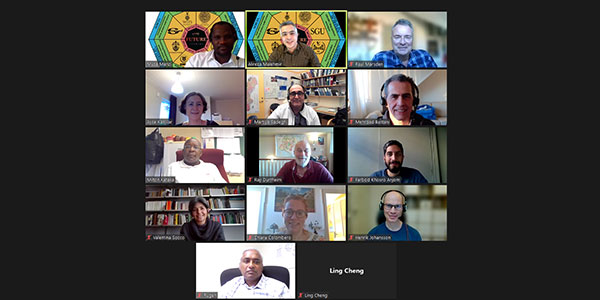Wits in multi-country high-tech mineral exploration partnership
- Wits University
Team of experts help search for metals and minerals needed to meet the tech demands of an evolving world.
The discovery of new metal and mineral resources is necessary to supply raw materials for emerging technologies.
These technologies are required to meet the expectations of billions of people and the demand for higher living standards.
The geological conditions of Africa and Europe suggest that these critical metals and minerals maybe found in these regions, but their discovery will require non-destructive, high-resolution and deep exploration techniques.
To this end, a consortium of South African Partners – Wits University, Gold Fields Ltd, University of Venda, and counterparts in Europe including Uppsala University (Sweden), Polito University (Italy), Sercel (France), Geological Survey of Sweden (Sweden), and Nordic Iron Ore AB (Sweden) will leverage their expertise to develop new seismic, electromagnetic and magnetic methods for deep exploration targeting. These methodologies boast unprecedented penetration, sensitivity, and resolution.
The project, titled FUTURE: Fiber-optic sensing and UAV-platform techniques for innovative mineral exploration commences in April 2022 and will span approximately two years.
It is anticipated that the FUTURE project will advance high-resolution imaging and modelling of the host rock and any mineralisation between tunnels and the surface, and in the down-dip direction.
The project has a total budget of R21-million and will be funded by the Department of Science and Innovation (DSI – South Africa), Vinnova (Sweden), Ministry of Universities and Research (Italy), and National Agency for Research (France) via ERA-NET Confund on Raw Materials (ERA-MIN).

Project leader and director of the Wits Seismic Research Centre Professor Musa Manzi says the FUTURE project seeks to develop innovative, environmentally friendly and cost-effective technologies for deep exploration, primarily in the challenging mine environment.
Professor Alireza Malehmir from Uppsala University says the planned work will employ fiber-optic sensing technologies and UAV-based magnetic and electromagnetic surveys for high-definition target generations and subsurface imaging.
The project team includes researchers from universities, geological survey, equipment manufacturers, and mining companies on two continents and will support the exchange of knowledge and experiences across zones.
Exploration sites
Blötberget in the Ludvika Mines in Sweden is one of the two target sites given the wealth of information available from earlier studies. The mine is known for its iron-oxide deposits – a combination of minerals from which metallic iron can be extracted for various uses. There is a high demand for iron-ore products from maturing economies including Europe, Japan, China, Africa, and now increasingly in the Middle East and India. Higher Iron ore grades are required in improving auto markets, construction, and other demanding types of specialised infrastructure. Technology is increasingly demanding sophisticated forms of steel.
The second site is South Deep Mine which falls under Gold Fields in South Africa, where mining at depth requires improved understanding of potential resources at depth and their host rock structures. South Deep mine is one of the deepest (> 2.5 km mining depths) and largest gold-producing mines in the world. Given the deep nature of the mining operation and the prevailing rock stress fields, the mine is geological complex and subjected to comparatively high levels of mining-induced earthquakes. The site is ideal because the project may improve the life of the mine by mapping the mineralisation between the surface and tunnels, as well as protect miners working underground by mapping zones of weaknesses that are important for mine planning and safety.
“We envisage that innovative technologies that will be used at South Deep would make a good case study on how one can maximize the value of the mining infrastructure – such as tunnels and boreholes –using geophysics for mineral exploration, especially at deep mines in South Africa, and future deep mines in Europe,” says Manzi.
As human endeavours and discoveries soar, gold will continue to be valued for its uses in electronics and computers, phones, medicine, aerospace, etc.
Several field surveys are planned as well as new prototypes and solutions to make these types of surveys cost-effective in hard rock settings. The project will also involve a major training and educational component to capacitate masters and PhD students.

